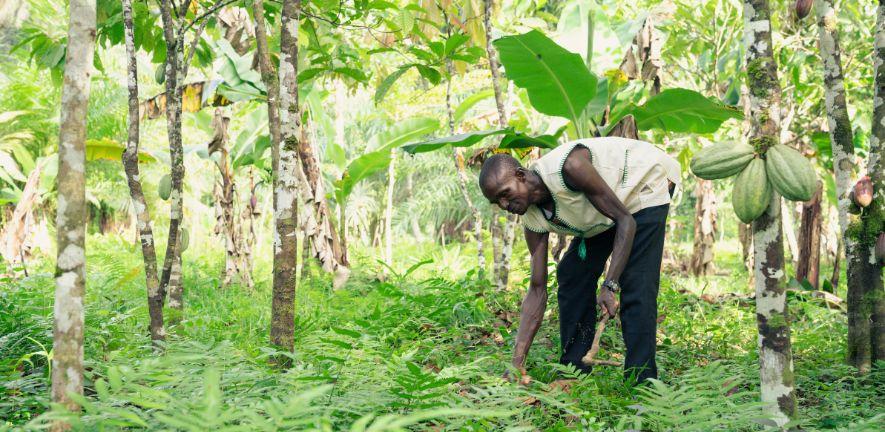
Submitted by Abigail Youngman on Thu, 13/02/2025 - 17:12
A paper published today in the journal Science, co-authored by Prof Andrew Balmford and other members of the Dept of Zoology’s Conservation Science Group, calls on the global community to recognise that rewilding productive farmland or forestry in industrialised nations may do more harm than good on a planetary scale.
Exploratory analysis by the team suggests that reclaiming typical UK cropland for nature may be five times more damaging for global biodiversity than the benefit it provides local species, due to the displacement of production to more biodiverse regions.
While this “leakage” has been known about for decades, it is largely neglected in biodiversity conservation, say the researchers. They argue it undermines actions ranging from establishing new nature reserves to the EU’s environmental policies.
They say that even the UN’s landmark Global Biodiversity Framework – aiming for 30% of the world’s land and seas to be conserved – makes no mention of the leakage problem.
“As nations in temperate regions such as Europe conserve more land, the resulting shortfalls in food and wood production will have to be made up somewhere,” said Prof Andrew Balmford.
“Much of this is likely to happen in more biodiverse but often less well-regulated parts of the world, such as Africa and South America. Areas of much greater importance for nature are likely to pay the price for conservation efforts in wealthy nations unless we work to fix this leak.”
“The first thing we need to do is collectively acknowledge that these leaks exist,” said co-author Prof Brendan Fisher from the University of Vermont. “If protesting a logging concession in the US increases demand for pulp from the tropics, then we are unlikely to be helping biodiversity.”
Co-author Dr Ben Balmford of the University of Exeter said: “This issue demands far greater attention from a sector that seeks to shape how 30% of an ever hungrier and more connected planet is managed.”
‘Leakage’ is already a major issue for carbon credits tied to forest preservation, say researchers. But they argue it’s a real problem for biodiversity conservation efforts too.
While protected areas can slow deforestation inside their borders, there’s evidence it can simply shift to neighbouring areas. Production can also be displaced much further. Efforts to protect the Pacific Northwest’s old-growth forests resulted in increased logging in other North American regions, for example.
Yet a survey of site managers of tropical conservation projects conducted by the Cambridge team found that 37% had not come across the concept of leakage, and less than half of the projects were attempting to curb any displacement damage.*
The researchers explored how leakage caused by protected areas could affect global biodiversity by applying real-world food and biodiversity data to two hypothetical conservation projects.
They found that rewilding a sizeable area of Brazilian soybean farms would push production to nations such as Argentina and USA, but because Brazil is so important for biodiversity, the local conservation gains could be around five times greater than the displacement harms. The opposite would be true if the equivalent area of UK arable farmland was reclaimed for nature. Here, production would be displaced to Australia, Germany, Italy and Ukraine.**
The paper's authors call on governments and the conservation sector to take leakage far more seriously when making environmental policy at national and global level.
They suggest a number of ways in which leakage could be reduced. Conservation projects could work with others to reduce demand – especially for high carbon-footprint commodities such as red meat, or targeting conservation in areas high in biodiversity but where production of food or timber is limited. One example is restoring abandoned tropical shrimp farms to mangroves.
Beyond planning where to conserve, major conservation initiatives should work with partners in other sectors to support local farmers, so that overall levels of production are maintained in the region despite protected areas. The team cite examples ranging from forest-friendly chocolate to herding practices that protect snow leopards.
Where local yield increases are difficult, larger-scale programmes could establish long-range partnerships with suppliers in the same markets to make up shortfalls in production.
Prof Andrew Balmford, added: “At its worst, we could see some conservation actions cause net global harm by displacing production to regions which are much more significant for biodiversity.”
Text by Fred Lewsey.
*Survey of 100 practitioners involved in area-based tropical conservation projects, including directors, managers, coordinators, and researchers. Respondents came from 36 countries across all five continents. Further details: https://zenodo.org/records/14780198
** Two hypothetical habitat restoration programs covering 1000km2 of Brazilian soy-producing land, and restoring 1000km2 of arable farmland in the UK that produces wheat, barley and oilseed rape.
Image: The Gola Rainforest Project in Sierra Leone. This has limited leakage while slowing deforestation by supporting nearby farmers such as Mallo Samah to increase their yields and get higher prices for their cocoa. Photo credit: Michael Duff, © RSPB-images.com.
